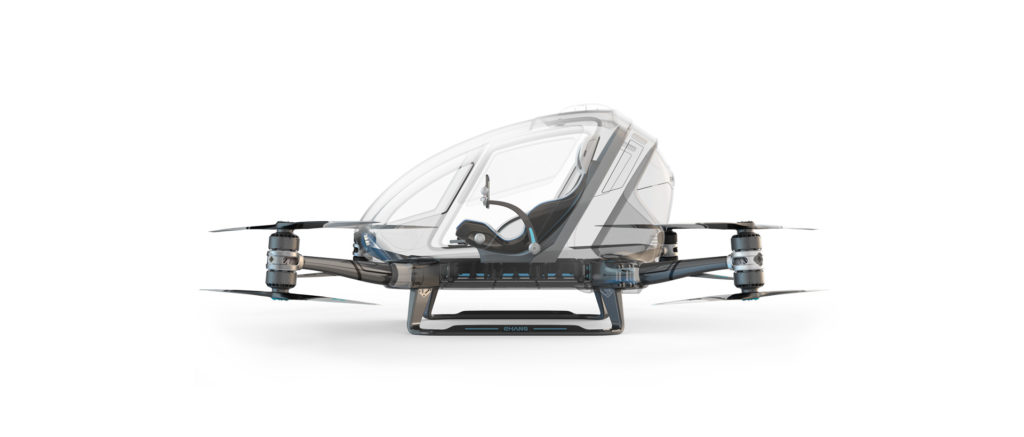Personal VTOL world moving faster than ever – but not quite there yet
Had you asked me 5 years ago whether we’d ever see flying taxi cabs in the skies of our larger cities during our lifetime, I’d have laughed it off with a resounding “no”.
Now please wait for a moment so I can remove my foot from my mouth – because technology has evolved so much faster than I ever could imagine.
The VTOL (vertical take-off and landing) personal transportation world is working extremely hard to solve some of the harder problems, and several look like they have cracked the code:
First up is the Ehang 184 personal passenger drone (seen above). From a distance, this machine really does remind you of a drone. It flies thanks to four arms, each with 2 propellers. Once completed and ready to fly, it’ll whisk its passengers away at speeds of up to 100km/h (62mph). Its maximum altitude is 3,300 meters (11,000 feet), which is about 3000 meters higher than I’d feel comfortable with…
Inside its small cabin are all the amenities you’d expect from what is essentially a private helicopter; air conditioning, 4G wireless hotspot, reading lights and enough storage space for a backpack. Whether or not the Ehang 184 will ever enter true passenger service is still unknown – the company has been dealing with some internal issues, but confirms they will start flight testing soon.
The next personal transporter is a bit closer to reality thankfully. Startup Lilium just secured an additional 90 million to continue developing its electric powered VTOL beast. Equipped with dual jet engines, the craft takes off, then rotates its jets and whisks you away. The concept is very much like Boeing’s Osprey, or even the rotating nozzle technology on the Harrier Jump Jet. Behind Lilium are some pretty big names in aerospace; the European Space Agency and Airbus have committed money and engineers, and most recently the company snapped up Audi’s head of autonomous driving.
Lilium told reporters last year that they’d be performing manned flight tests in 2019, but that seemed a bit ambitious at the time. Even more ambitious is their goal of full flight service by 2025.
Both of these devices rely on battery power to fly – and if you’ve ever flown a drone, you’ll know that current battery technology stinks.
The future of these companies relies on the energy world developing new battery compositions, because without that, they’ll probably be limited to the same 25 minute range most drone pilots deal with at the moment. Other hurdles include suitable landing spots (one does not simply land a jet anywhere they want), as well as a whole host of regulatory issues. Current regulations do not permit battery operated aircraft for passenger use.
What are your thoughts on personal VTOL aircraft? Could you see yourself booking a flying Uber, and being dropped off right outside your first class flight to Dubai?

